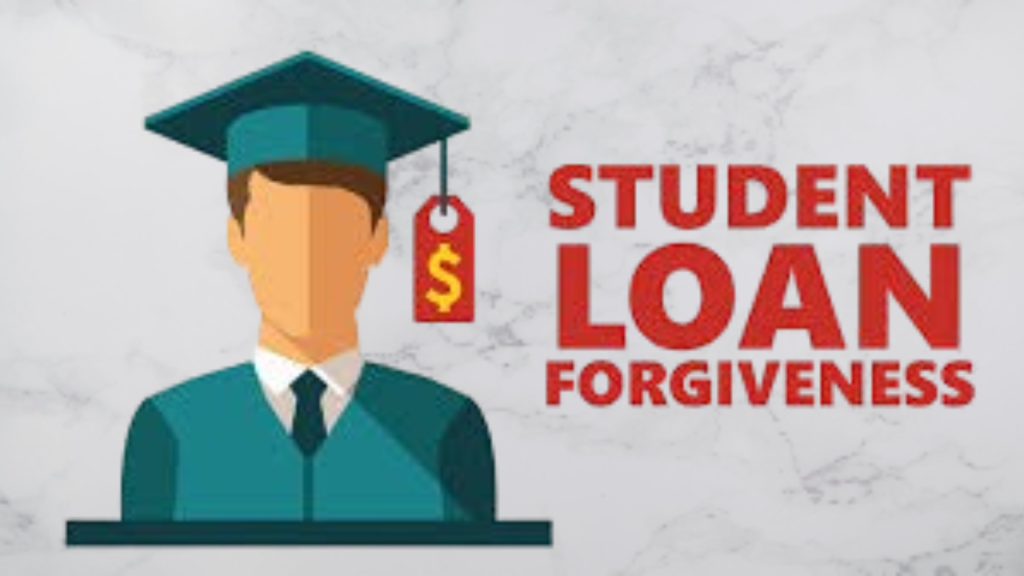Student loan debt is a burden carried by millions of people across the United States, and the struggle to repay it can last decades. For many, the promise of student loan forgiveness offers hope, a light at the end of the tunnel. But what exactly is student loan forgiveness, and who can benefit from it?
In this article, we’ll explore the basics of student loan forgiveness, the types of programs available, eligibility requirements, and the potential impact it could have on your financial future. Whether you’re a recent graduate or someone who’s been paying off loans for years, understanding student loan forgiveness can make a world of difference in your financial planning.
What is Student Loan Forgiveness?
Student loan forgiveness is a program that allows borrowers to have a portion, or in some cases all, of their student loan debt wiped away. These programs are typically designed to help those who work in public service, teaching, or other specific fields, or who are enrolled in certain income-driven repayment plans. The aim is to reduce the financial burden on borrowers who may struggle to make their loan payments due to the size of their debt relative to their income.
It’s important to note that not all loans are eligible for student loan forgiveness. Typically, federal student loans are the ones that qualify, while private loans are not. Each forgiveness program has its own set of criteria, and it’s crucial to understand these before assuming that your loans will be forgiven.
Types of Student Loan Forgiveness Programs
There are several types of student loan forgiveness programs, each with its own qualifications and benefits. Here are some of the most common:
Public Service Loan Forgiveness (PSLF)
Public Service Loan Forgiveness is one of the most well-known forgiveness programs. It’s designed for borrowers who work full-time for qualifying employers, such as government organizations or non-profit entities. To qualify, you must make 120 qualifying payments (roughly 10 years) under a qualifying repayment plan, while working for a qualifying employer.
The good news is that if you’re working in public service, your remaining loan balance may be forgiven after you make those 120 payments. This makes it a great option for teachers, nurses, military personnel, and other public servants.
Teacher Loan Forgiveness
For educators, the Teacher Loan Forgiveness program offers a way to reduce debt after serving in low-income schools or educational service agencies. Teachers who have worked for five consecutive years may qualify for forgiveness of up to $17,500 on their Direct Subsidized and Unsubsidized Loans. This program is particularly helpful for those starting their careers in education, a field where wages may not always match the cost of education.
Income-Driven Repayment Plan Forgiveness
If you’re not working in public service but still find it difficult to make your student loan payments, you might benefit from an income-driven repayment plan. These plans calculate your monthly payment based on your income and family size, potentially lowering your payments to a manageable amount. After 20 to 25 years of payments, depending on the plan, any remaining loan balance may be forgiven.
This type of student loan forgiveness is especially helpful for borrowers with large amounts of debt compared to their income. However, be aware that the forgiven amount may be considered taxable income, which could result in a hefty tax bill.
How to Qualify for Student Loan Forgiveness
Qualifying for student loan forgiveness depends largely on the type of forgiveness program you pursue. For example, Public Service Loan Forgiveness requires you to work full-time for a qualifying employer and make 120 qualifying payments under a specific repayment plan. Teacher Loan Forgiveness requires five consecutive years of teaching in a low-income school.
For income-driven repayment plans, you need to be enrolled in one of the qualifying plans and meet the requirements regarding payment amounts and the length of repayment. It’s essential to keep detailed records of your payments and employment to ensure that you meet the necessary conditions for forgiveness.
The Impact of Student Loan Forgiveness
The financial relief provided by student loan forgiveness can be life-changing for many borrowers. By reducing or eliminating student debt, forgiveness programs allow individuals to focus on other financial goals, such as saving for retirement, buying a home, or investing in their future.
The emotional impact is equally significant. Carrying the weight of student loans can be stressful and overwhelming, especially for those who work in public service roles where salaries may be lower. Student loan forgiveness provides a sense of relief and allows individuals to continue their careers without the constant worry of unmanageable debt.
However, it’s essential to approach student loan forgiveness with realistic expectations. Not all borrowers will qualify, and some may find the process of applying for forgiveness to be lengthy and challenging. Moreover, with current political debates surrounding student loan forgiveness, the future of these programs is not guaranteed.
Conclusion
Student loan forgiveness is a valuable option for many borrowers, offering the possibility of wiping away a portion or even all of their student debt. Whether through Public Service Loan Forgiveness, Teacher Loan Forgiveness, or income-driven repayment plans, there are several pathways to forgiveness, each designed to ease the financial burden for different types of borrowers.
If you’re struggling with student loan debt, exploring the various forgiveness options could be the key to a more stable financial future. While the process may be complex, the potential payoff—freedom from debt—makes it worth the effort. Always keep in mind the importance of staying informed, maintaining accurate records, and meeting all eligibility requirements to ensure your success in securing student loan forgiveness.
